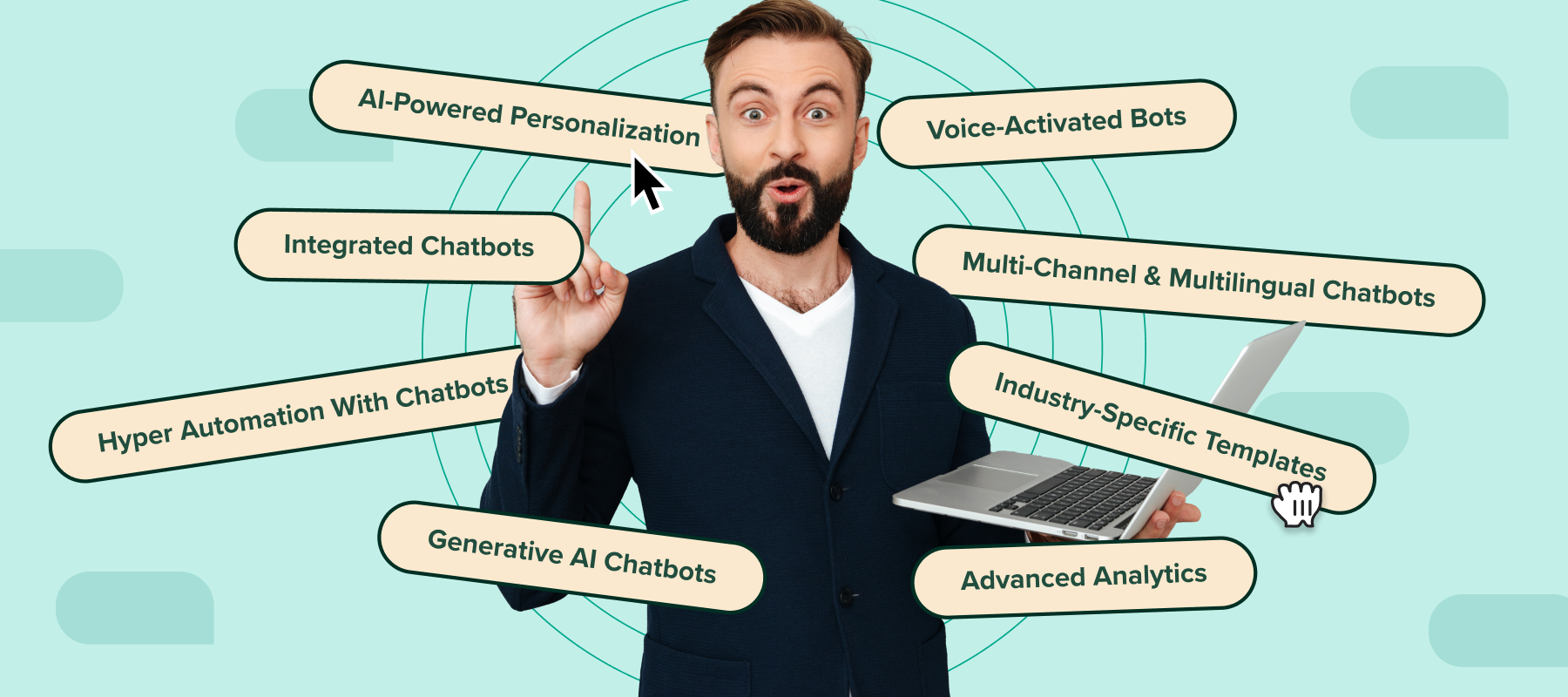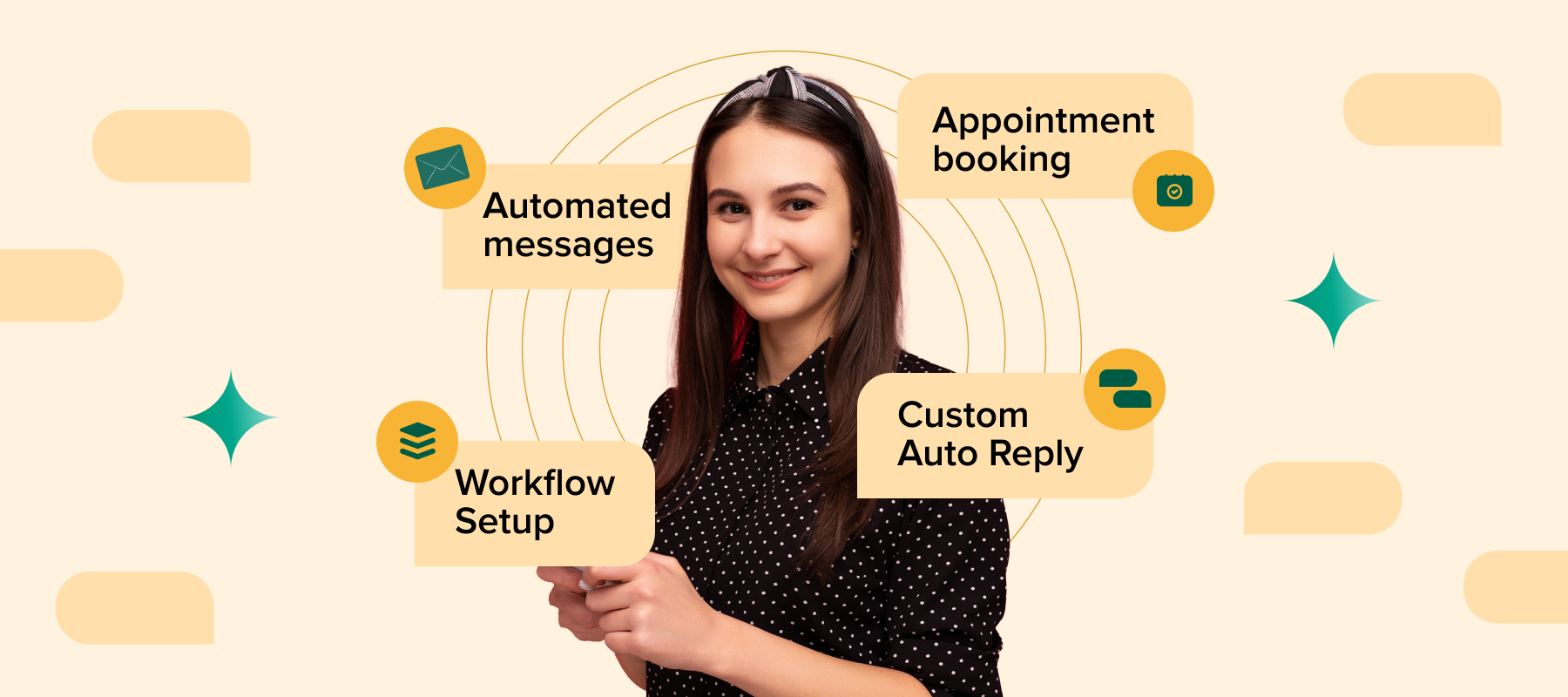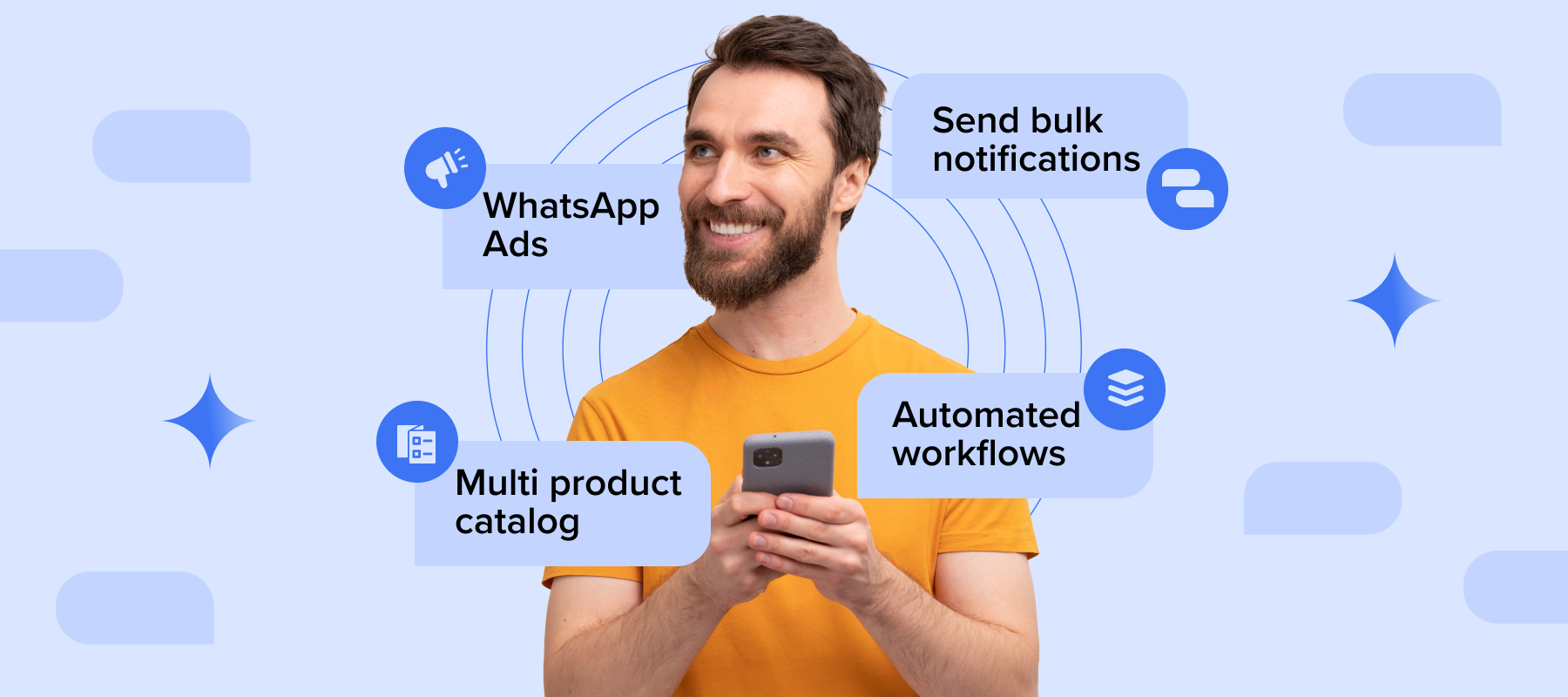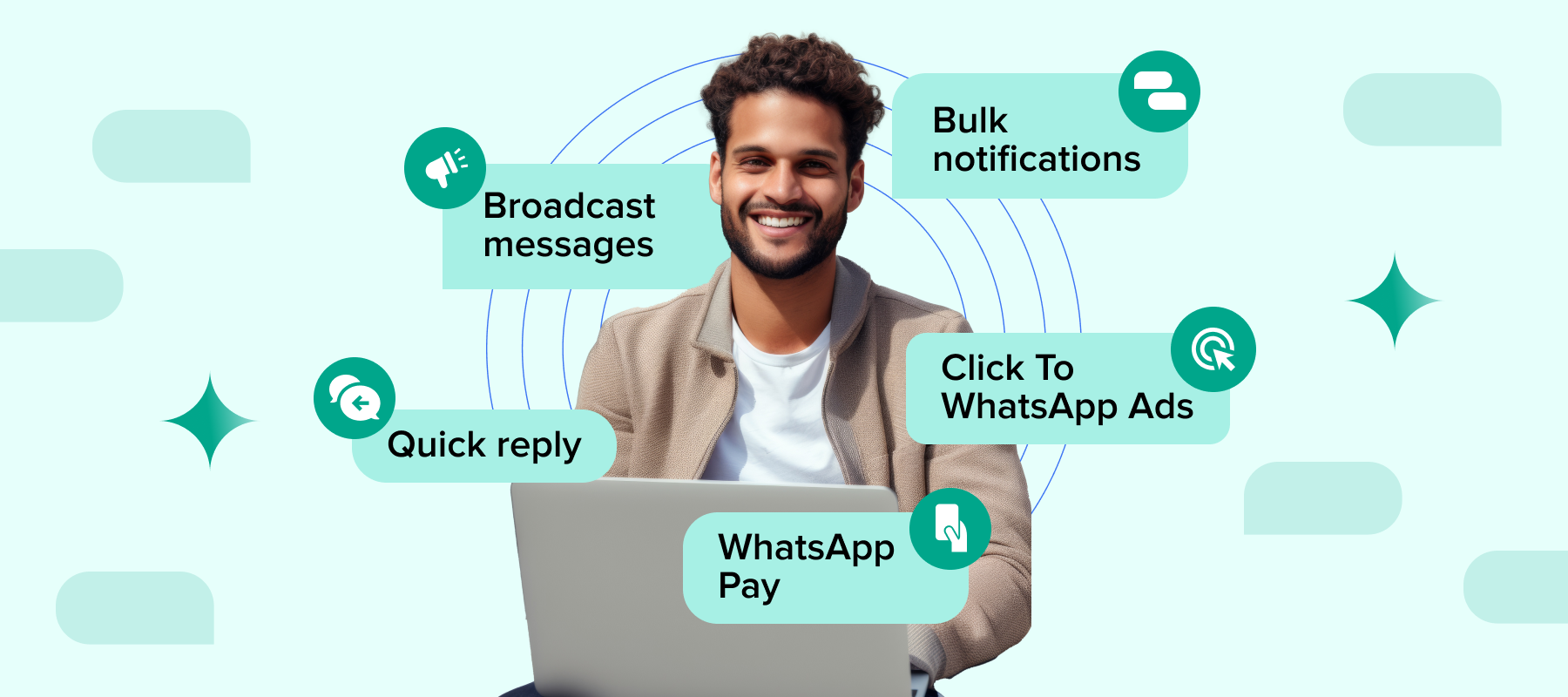With customer engagement taking the forefront across channels, chatbots have become commonplace in most business strategies. But building a chatbot from scratch to tackle a multitude of conversations is not easy. That’s where no-code chatbot builders come in.
In this post, we’re going to explore the growing demand for no-code chatbot builders and the latest trends shaping the industry.
Is No-Code Chatbot builder high in demand?
Gartner reports that the global low-code market is set to reach $257.9 billion by 2026, while the no-code market value is estimated to hit $11.2 billion by 2025. A big part of the latter is chatbot builders, owing to their ability to enable conversations at scale through automated workflows across channels.
Here are some reasons for the growing demand for no-code chatbot builders across businesses of all sizes:
– Accessibility – Small and medium-sized enterprise businesses can set up chatbots without hiring expensive developer teams.
– Time efficiency – Drag and drop interfaces allow businesses to create and deploy custom chatbots in days instead of months.
– Engagement scalability – Chatbots are helping businesses tackle customer conversations more effectively and efficiently, helping improve experiences.
– Cost savings – Being able to automate almost 70% of conversations is helping businesses reduce their customer support costs.
– Personalization – AI-powered chatbots can process customer data in real time to enable personalized interactions, improving engagement rates.
Top No-Code Chatbot Builder Trends in 2025
With the use cases of no-code chatbot builders evolving, here are some of the trends to look into in 2025:
1. AI-powered personalization
New-age chatbots are no longer running on scripted responses and limited triggers. AI-powered chatbots will enable better personalization by analyzing user behavior, preferences, past interactions, purchases, and other data, making the conversations feel more contextual and engaging.
2. Integrated chatbots
Businesses are no longer using chatbots in siloes. No-code platforms are not enabling businesses to integrate chatbots with CRMs, ERPs, and marketing automation tools. This is helping businesses unify customer data across platforms, ensuring consistent and informed interactions.
3. Multi-channel and multilingual chatbots
With personalization taking center stage, businesses catering to global audiences are focusing on localization. No-code builders are helping businesses not just create chatbots for multiple platforms including social media, messaging apps, websites, and other customer touchpoints, but also converse with customers in their preferred languages.
4. Generative AI chatbots
No-code builders are integrating features that will help businesses make the most of Generative AI in chatbots. This will help businesses draft chatbot scripts, train the bot on custom datasets, and enable personalized conversations across channels, all without coding.
5. Voice-activated bots
With the rise of voice assistants like Alexa, Siri, and Google Assistant, voice-activated chatbots are trending. No-code chatbot builders will enable businesses to create voice bots that can handle spoken queries, offering more convenience to their customers. This trend is particularly picking up in eCommerce and healthcare.
6. Hyper automation with chatbots
Traditional chatbots are set to trigger a hand-off to human agents on identifying complex queries. But with AI, chatbots are set to go beyond answering FAQs and handle tasks like processing orders, managing bookings, sending follow-up communication, and other multi-step processes. This will help businesses significantly reduce the manual workflow of teams and improve efficiency across departments.
7. Industry-specific templates
Many no-code chatbot builders now offer industry-specific templates. This will help businesses reduce the setup time while ensuring their workflows meet the regulations and compliances that need to be followed.
8. Advanced analytics
No-code chatbot builders are enhancing their reporting dashboards. Moving on from generic metrics like send, open, and click-through rates, they will now help businesses monitor engagement rates, response accuracy, and conversion rates, and run sentiment analysis to understand their audiences better.
Conclusion
Chatbots are going to continually evolve as consumer preferences and interactions change.
This is why businesses need to use a no-code chatbot builder that is known to continually improve their platform capabilities.
If you’re looking for the best no-code chatbot builder to keep up with the upcoming trends, explore Interakt today.



